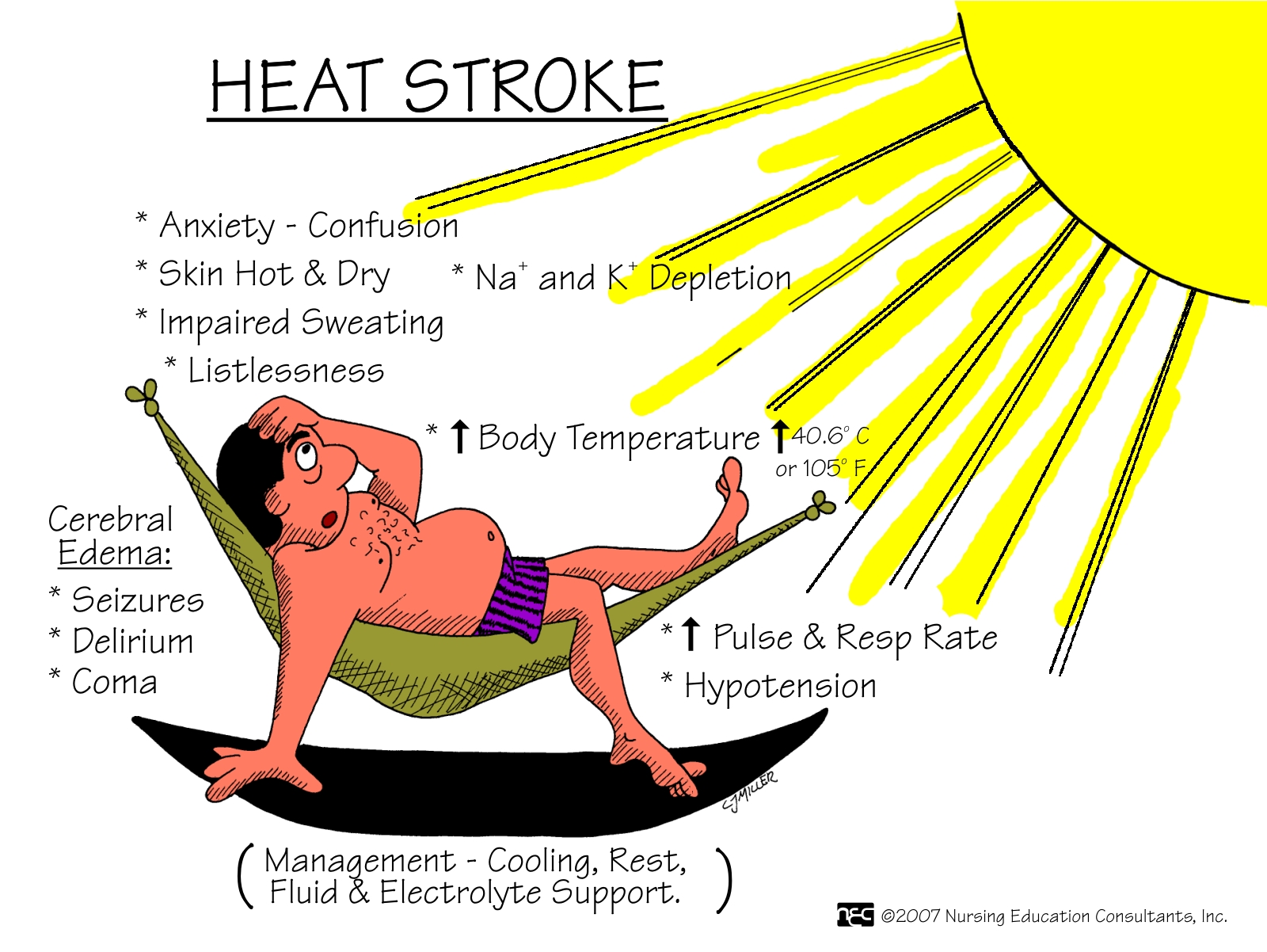
Heatstroke is the sudden and unexpected onset of extremely high temperatures. Heatstroke causes damage or death to the brain or other vital organs by lowering the temperature of the blood and tissues. Although heatstroke mostly affects people over the age of 50, it can also be devastating for healthy young athletes.
Heatstroke is caused by prolonged exposure to extremely high temperatures – usually combined with low levels of hydration – which usually results in the failure of the temperature control mechanism of the autonomic nervous system. This failure causes an excessive increase in core body temperature and leads to serious, often fatal consequences. Heatstroke can happen suddenly, without warning. However, in most cases, heatstroke begins slowly, over several minutes or hours, depending on the degree of heat exposure. Thus, victims usually do not realize that they have suffered severe heatstroke until they pass out or are unable to properly respond to their surroundings.
Heatstroke often occurs unexpectedly and without warning, often during sports activities or in cold and humid conditions such as showers, swimming pools or hot tubs. While many people with heatstroke may realize they have been exposed to extreme temperatures, very few actually seek treatment or seek medical attention for their condition.
Heatstroke symptoms may include: dizziness, confusion, fainting, nausea, vomiting, profuse sweating, trembling, blurred vision, nausea, seizures, irregular heartbeat, fainting, coma, or unconsciousness. Some victims may show signs of shock, confusion, lack of coordination and loss of consciousness. Heatstroke victims may also experience mild tremors and chest pain, but these symptoms usually resolve within 24 hours.
Heatstroke symptoms can also include abdominal pain, headache, dizziness, muscle weakness, confusion, and dry mouth. Many people are hypersensitive to cold and may experience nausea. Some patients may develop fainting and loss of consciousness due to a lack of oxygen supply. Heatstroke can be fatal if left untreated. Therefore, proper cooling of the affected people must be undertaken immediately.
Treatment for heatstroke symptoms can range from first aid to hospitalization and, in some cases, surgery. Heat problems should be addressed as soon as possible. Patients who do not see improvement within two to four to six hours after exposure should seek emergency care to reduce the risk of death. Treatment for severe heatstroke usually includes intravenous fluids to replace lost fluids; vasoconstrictor drugs; drugs to reduce the effects of a hyperthermic state; and possibly drugs to stabilize heart rate, blood pressure and / or decrease heart rate.

While in the hospital, patients should be closely monitored for breathing problems, breathing changes, and other complications to prevent further complications, and take appropriate safety measures to avoid injury during recovery. Heatstroke emergencies should always be reported to the appropriate health department and properly supervised by a doctor or other staff member.
Heatstroke symptoms are treatable with simple first aid measures and prompt medical attention. Early detection and treatment of heatstroke can significantly reduce the risk of death.
If you develop any symptoms of heatstroke, be sure to tell your doctor. Seek medical attention immediately to avoid death.
When you feel thirsty, a warm shower and hot bath will help you moisturize your skin. You should try to stay cool while showering, especially if your skin is cold and your limbs are uncomfortable. To prevent overheating, try to maintain a healthy body weight by drinking at least eight glasses of water a day.
Avoid exercise that can cause dehydration. Remain calm by avoiding exercising in very hot weather and wearing loose-fitting clothing.
Do not play outdoors in extremely high or low temperatures, especially in areas where extreme temperatures are a concern. Protect yourself and your children from the sun's harmful UV rays and keep cool with a wide-brimmed hat and sunglasses. Wear light colored clothing, especially in warm weather.

